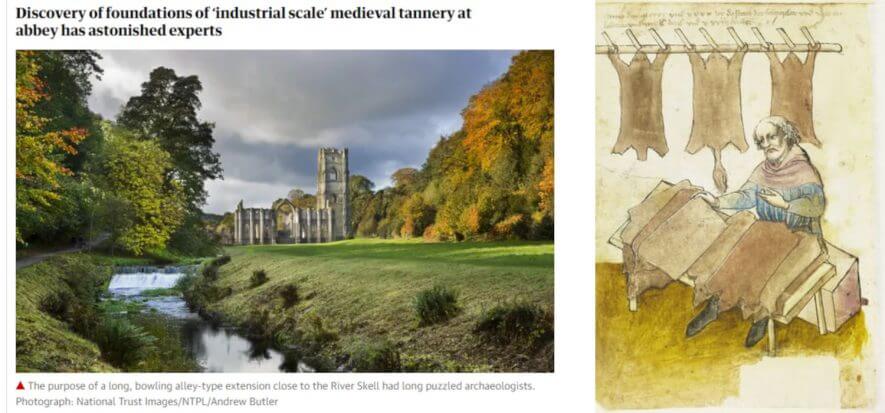The hidden tanning past. That’s what’s hidden underground at Studley Royal Park, in England. In the green area surrounding the Cistercian abbey of Fountains, archaeologists have found the foundations of buildings that demonstrate the presence of an intense tanning activity. The remains are thought to date from between the 12th and 13th centuries. Size of the structures suggests that tanning was one of the main means of support for the religious community.
The hidden tanning past
Archaeologists from the National Trust have used geo-radars to reveal extensive structures in the Studley Royal Park underground. The researchers, as reported by The Guardian (from which the images are taken), discovered the existence of two large buildings surrounded by wells near the river Skell, at the UNESCO World Heritage Site. According to the archaeologists, this is a large tannery: the wells are said to be tanks for the tanning of hides. The structures date back to the 12th-13th centuries, and the tannery remained in operation until 1539, when the monastery was abandoned.
Industrial activity
The size of the structures, and the documents found, lead the archaeologists to believe that the Cistercian monks of Fountains Abbey developed their tanning business as their community grew. “Originally, their wealth was based on wool, but later the community also diversified into livestock farming, while the need for processed hides was constant throughout the life of the abbey,” Mark Newman of the National Trust explains to the Yorkshire Post. He says tanning was a vital part of the abbey’s economy, producing leather for clothing, belts, bedding, book bindings and parchment for reproducing religious texts.
Read also:










